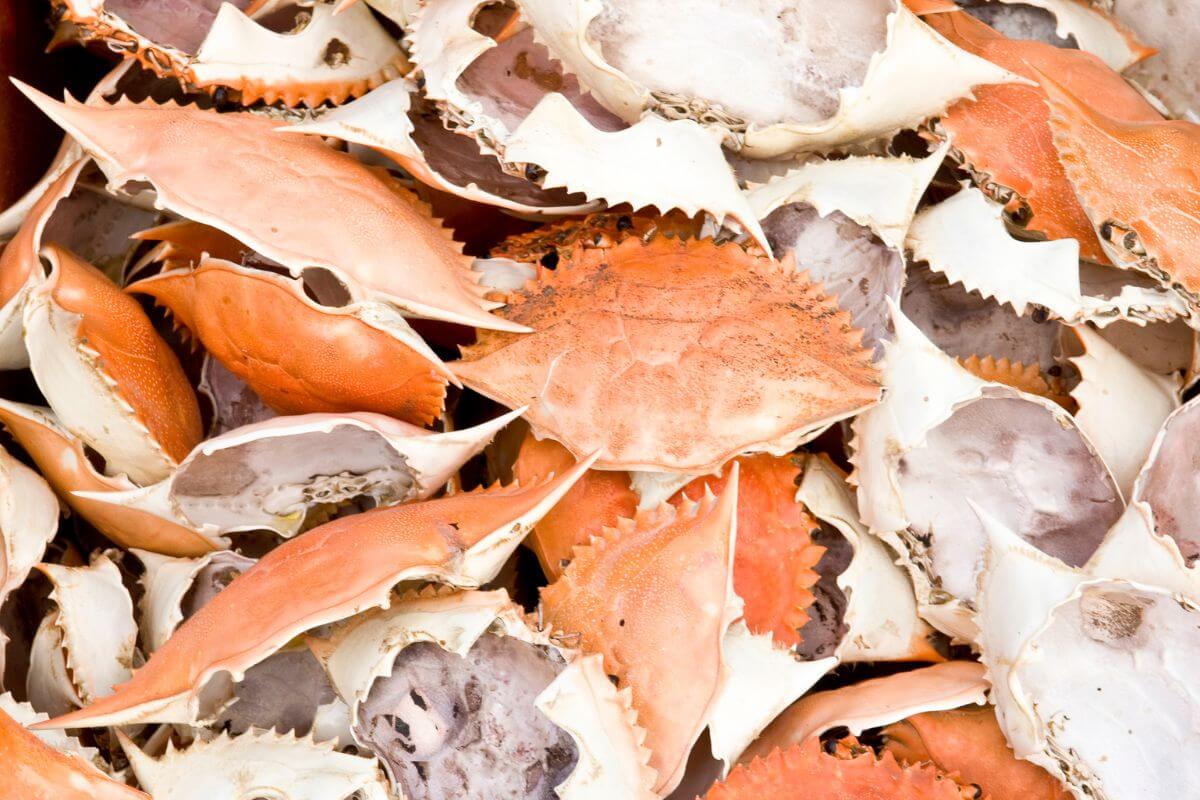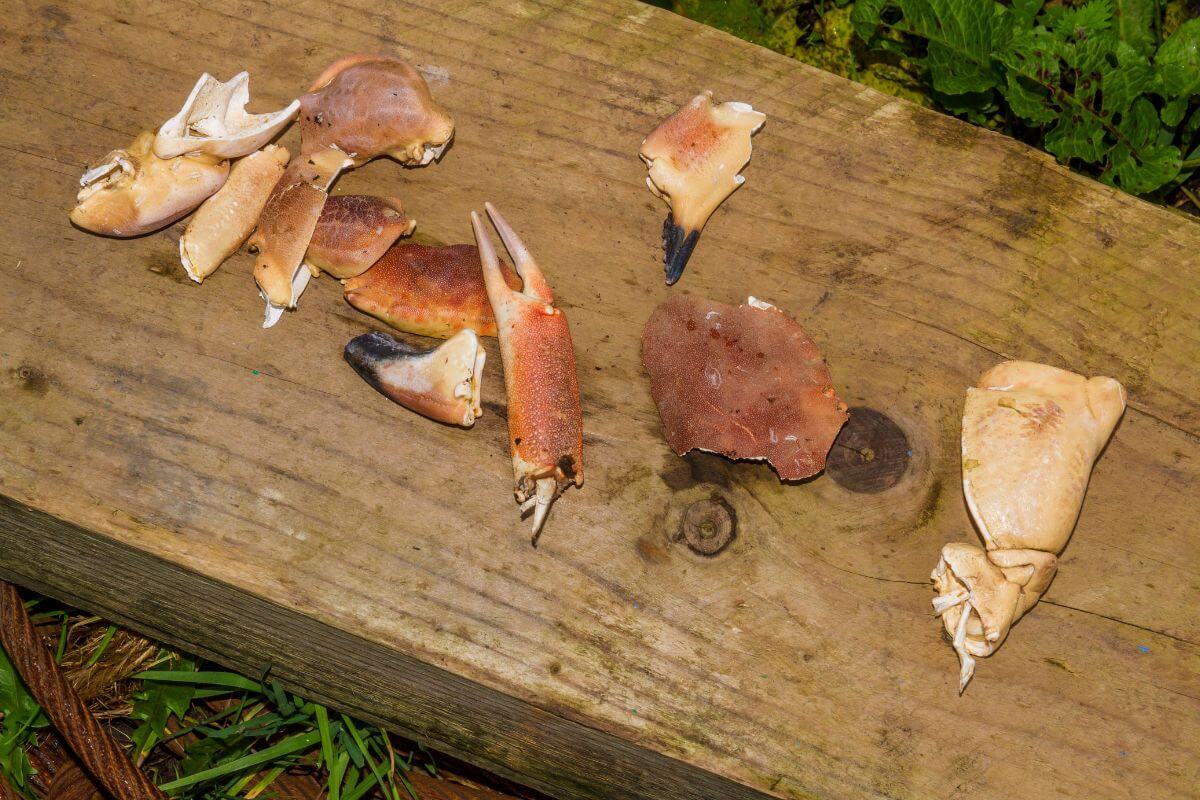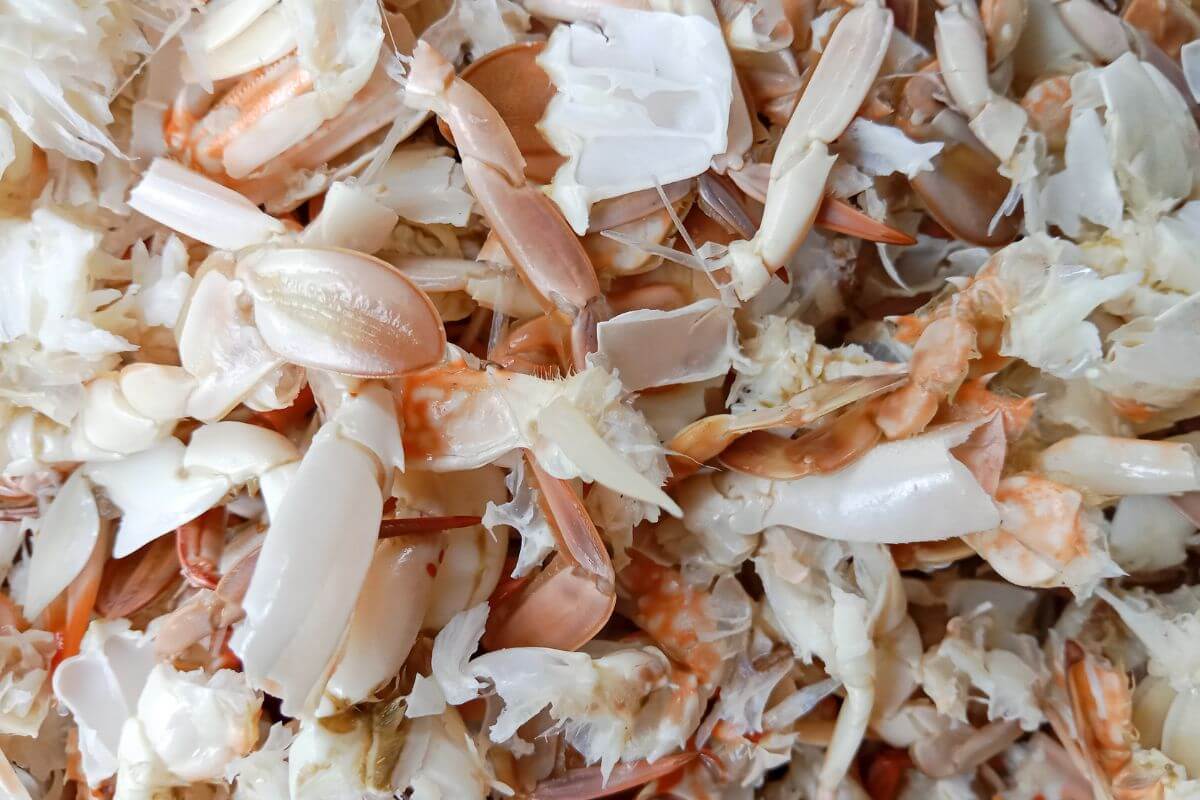Crabs are a popular food and steamed crabs are a favorite of mine. But when I’m done, there are many crab shells all around the plate and table.
Can you compost crab shells? Yes, you sure can!
Composting crab shells is not as difficult as you might think. There are many benefits to composting crab shells too. Not only does it help reduce waste, but it also helps prevent pollution and save money.
This article will discuss how you can compost crab shells, the benefits, and preparing crab shells as a compostable material before adding them to your compost pile.
- Related article: Complete Guide to Composting
Can You Compost Crab Shells?

As an organic material, crab shells are 100% biodegradable and completely safe to compost. In fact, as they contain many beneficial nutrients, if you have leftover crab shells, you should definitely use them in your compost.
Crab shells can be a valuable source of plant nutrients in your garden bed, making them ideal for adding to your compost piles.
They are also great as a mulch for alkaline-loving vegetables and flowers, or soak them in water to create a calcium-rich fertilizer. Crush the shells to release the minerals into the soil and discourage garden pests.
Crab shells will keep away snails, slugs, grubs, and ants. You could also add them to potting mixes for nutrition and water drainage purposes.
Benefits of Composting Crab Shells

Crab shells contain many compounds and nutrients that help plant growth. The shells are very high in calcium carbonate, which helps plants fight disease. The alkalinity of crab shells can help balance out compost or soil that is too acidic.
Crab shells can be a great organic fertilizer and a natural alternative to chemical fertilizers. They are a source of phosphorous and magnesium, both of which aid photosynthesis.
Crab shells (and other seafood) are also a source of chitin. Chitin is a carbohydrate that encourages the growth of beneficial bacteria and enzymes, which deter harmful soil-borne organisms like insects, fungus, and nematodes.
As a great natural pesticide, chitin will not harm or damage plants or other wildlife. Chitin also contains nitrogen that is released as the crab shells break down.
Preparing Crab Shells for Composting
To get the best from your crab shells, here is a step-by-step guide to preparing and composting them.
- Clean the crab shells – Any meat, fat, or food residues can attract pests and lead to awful smells, so it’s best to give them a thorough clean before adding them to your compost. As seafood contains high salt levels, which is not beneficial to your compost or soil health, washing off excess salt is also essential.
- Crush the crab shells – As crab shells are carbon-rich, they will take longer to break down than nitrogen-rich materials. Crushing them into small pieces will speed up decomposition and help your compost form more quickly.
- Mix the crushed crab shells into your compost – Mixing the shells in with other compost materials will also help them break down. Crab shells can be added with other nitrogen-rich kitchen scraps for a good mix of materials. Remember to try and keep your brown to green ratio around 50:50.
Where Can You Get Crab Shells?

Of course, the best way to get crab shells is as leftovers after cooking and eating crabs! Waste crab shells are probably how most people will obtain them to add to their compost heap. Just make sure that you clean the shells thoroughly, removing any food residue.
However, if you don’t eat crabs, yet you want crab shells to add to your compost, there are a few places you can source them that don’t include chowing down on crab meat. Perhaps you have some crab-loving friends who don’t compost?
Of course, if you live near the sea, you probably won’t have any trouble getting your hands on some crab shells, and one way you could collect some is from the beach. While most shells are essential for the ecosystem, there is usually an excessive amount of crab shells left over from birds snacking on crabs.
Picking up some discarded crab shells every now and again probably won’t have too much of a negative effect on the ecosystem of your local beach.
However, crab shells collected from the beach will definitely be coated in salt, so give them a really good soak in freshwater before crushing them. Salt binds tightly with water and prevents plant roots from being able to absorb water. In some cases, salt can pull water from the plant.
As seafood shells are a waste product of the seafood industry, even if you live inland, you can probably get some from your local fish seller (fishmonger) or seafood restaurant.
Alternatively, crushed crab shells are easily obtained online, like this crab shell fertilizer from Amazon.
Can You Compost Crab Meat?
Like with any other type of meat, whether or not you can compost crab meat depends on your composting method and composting process. Adding crab meat can lead to foul odors in a traditional outdoor composter and attract rats and other pests.
However, you should be able to add clam meat without issue if you are using a sealed compost system like an electric composter, hot composter, Effective MicroOrganism composting, or an in-ground composting system like the Compot.
It is possible to compost a small amount of crab meat in a traditional composter, but you shouldn’t make a habit of it. In a pinch, you could bury it in the center of your compost, but make sure you dig it in deep enough, so hungry pests and animals can’t dig it up!
Learn more about the Different Composting Methods.
Compost Crab Shells Final Thoughts
All in all, crab shells are pretty easy to compost and help with having finished, healthy compost. There are many benefits to crab shells and are a great addition to your compost pile because they contain lots of nutrients.
For other articles on compost materials and more, check out these posts:


